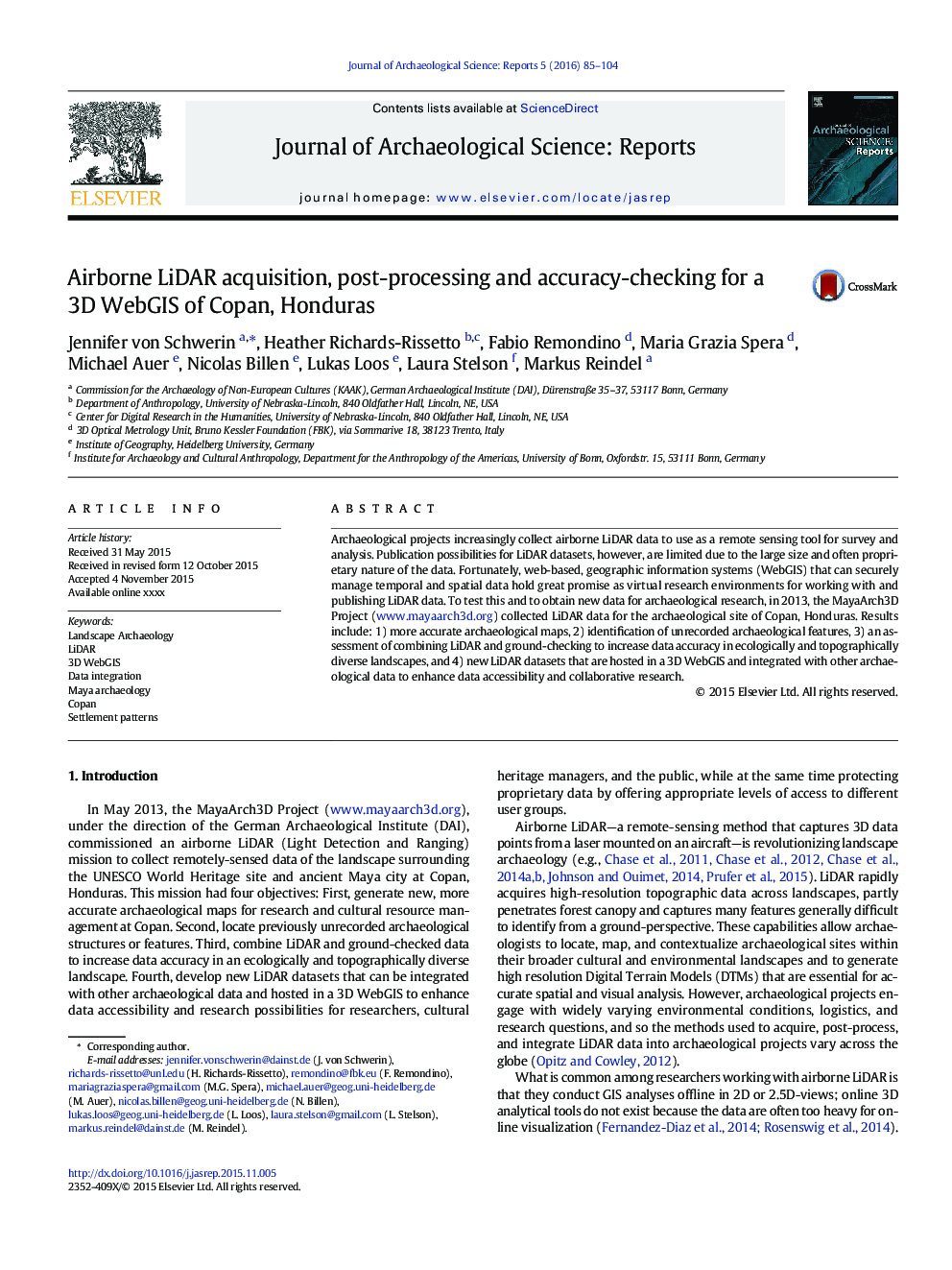| Article ID | Journal | Published Year | Pages | File Type |
|---|---|---|---|---|
| 7445894 | Journal of Archaeological Science: Reports | 2016 | 20 Pages |
Abstract
Archaeological projects increasingly collect airborne LiDAR data to use as a remote sensing tool for survey and analysis. Publication possibilities for LiDAR datasets, however, are limited due to the large size and often proprietary nature of the data. Fortunately, web-based, geographic information systems (WebGIS) that can securely manage temporal and spatial data hold great promise as virtual research environments for working with and publishing LiDAR data. To test this and to obtain new data for archaeological research, in 2013, the MayaArch3D Project (www.mayaarch3d.org) collected LiDAR data for the archaeological site of Copan, Honduras. Results include: 1) more accurate archaeological maps, 2) identification of unrecorded archaeological features, 3) an assessment of combining LiDAR and ground-checking to increase data accuracy in ecologically and topographically diverse landscapes, and 4) new LiDAR datasets that are hosted in a 3D WebGIS and integrated with other archaeological data to enhance data accessibility and collaborative research.
Related Topics
Social Sciences and Humanities
Arts and Humanities
History
Authors
Jennifer von Schwerin, Heather Richards-Rissetto, Fabio Remondino, Maria Grazia Spera, Michael Auer, Nicolas Billen, Lukas Loos, Laura Stelson, Markus Reindel,
